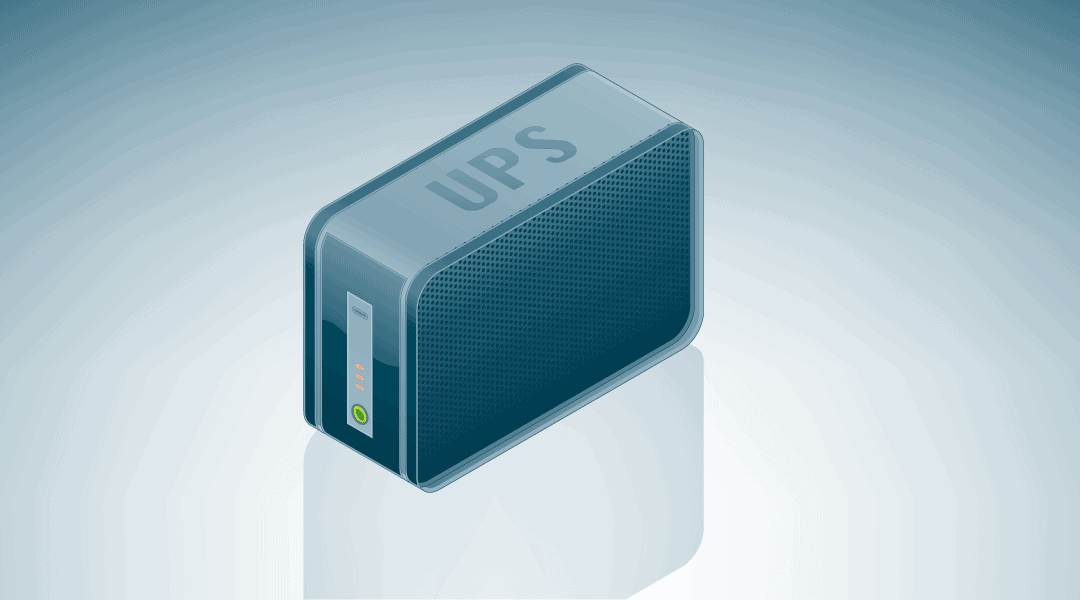
Welcome to our second installment in our backup power series. Check out our first post on the overall importance of how electricity and power can impact your IT infrastructure and why it’s important.
What’s a Uninterruptible Power Supply (UPS)? Well, the easiest answer is that a UPS is a big box that sits between your equipment and the power grid. The UPS has two main functions: condition the power going to devices and supply power to those devices when the grid goes out. This magic box has an input side that plugs into the wall, batteries inside it, and output plugs that go to the rest of your devices. While at a high level, that’s roughly what it does, it can actually get complicated pretty quickly.
How the UPS Fails Over to Backup Power: Standby, Line Interactive, or Double Conversion On-Line
Let’s start with supplying power to the devices when the grid has trouble. UPSes accomplish this with batteries. When the power goes out, the UPS uses the batteries inside it to keep the devices plugged into it running for a duration. There are, however, three (main) ways that UPS can switch you over to those batteries, and they drastically alter how seamlessly the transition goes.
The easiest is standby. Standby works pretty much exactly as you would expect: the power flows through the UPS to the devices without touching the batteries and the batteries charge separately. If the power fails, the UPS flips an internal switch that starts using the battery power instead of the grid power. This is the simplest solution, but that transition from wall to battery power isn’t the smoothest. It can take a while to make the switch, which is rough on the devices running on it. Because of this fact, standby UPSes are most frequently used as power protection for desktop computers/employee workstations and not for more sensitive gear like switches or servers.

Next is the Line Interactive type of UPS. These are similar to standby UPSes with the main exception being that the same inverter that charges the batteries powers the equipment during a power outage. That means it’s already energized and makes the transition much easier. This design is efficient and reliable, and you see it in most UPS 5,000 VA and under for servers/equipment.

Line Interactive Courtesy of APC
The last Type of UPS is Double Conversion On-line. These always charge the batteries and always run off the batteries. That means when there’s an AC failure, there’s no transfer time at all. This design is often used for 5,000-VA-and-up UPSes.

Double Conversion Online Courtesy of APC
The transfer times are one of the most important differences of these devices. Servers are much pickier about their power than desktops. One of our customers once had their server (singular) plugged into a standby UPS and every time the power blipped, or a self-test ran, the server would reboot. The transition time gap from grid to battery power was enough to shut the box down. Line Interactive makes this even quicker, and Double Conversion online make it non-existent.
UPS Power Conditioning
Power conditioning is another major factor. Small spikes in power are (relatively) easy to deal with, but drops in power aren’t. If you’ve ever seen your lights dim during a storm, that’s what the UPSes are trying to accommodate. Since standby only has two options, grid power or batteries, it has to accept a certain amount of dips and just pass them onto the devices, and then do a hard cut over to battery. Line Interactive can add a little bit of battery power to the dips and keep things uniform, where Double Conversion On-line are already running from batteries and the devices never notice.
Join us next week when we review how to size your UPSes!